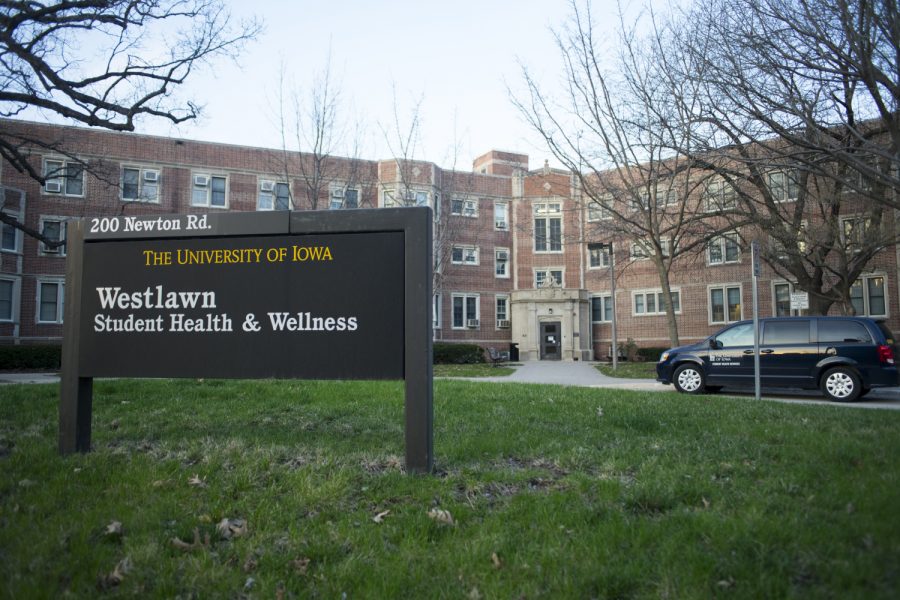Opinion: Seasonal depression among UI students should be accommodated
Seasonal affective disorder is a reality among college students that should be talked about more.
The Westlawn student health and wellness building is seen on Wednesday, Apr. 17, 2019.
February 24, 2020
Sometimes “stay warm out there” just isn’t enough.
Millions feel the effects of seasonal affective disorder, or SAD, around this time of year. It’s essentially a mood shift that occurs annually, beginning in late autumn and lasting through the winter, and it’s a common ailment among college students.
Seasonal depression is a legitimate illness. It’s not based on an association of darkness with negative emotions, or a pseudoscientific assertion. The lack of sunlight that comes with changing seasons can alter brain chemistry, which as a result shifts students’ energy levels. This can make it harder for students to focus on their academic responsibilities.
Colleges, including the University of Iowa, should do more to recognize this type of depression among students. Dialogue between instructors and their students should be encouraged, and specific mental-health resources should be promoted.
Seasonal depression isn’t unusual, with more than 3 million cases in the U.S. each year. Many medical experts theorize that the change in weather and natural sunlight exposure affects the body’s hormones. These seasonal changes cause the brain to make less serotonin, a neurotransmitter that regulates mood through the brain. Its deficiency then causes nerve cell pathways to not function regularly.
This change in serotonin levels can cause depression: noticeable changes in diet, oversleeping, or an uncharacteristic lack of motivation. With this absence of energy, students may begin skipping their classes, or neglecting to turn in assignments.
There are simple steps students can take to help restore their energy. Exposure to brightness — either by light or colorfulness within an environment — can help to stimulate the brain. Student Wellness offers light therapy, where students can check out a light box free for a month.
The UI Hospitals and Clinics also recommends other remedies such as being around plantlife or exercising regularly. These small steps can help motivate students to be active in their day-to-day life.
However, not all cases of SAD are easily treated.
Students who feel depressed or aimless can seek forms of therapy, such as University Counseling Services. By talking with a mental-health professional, students can be given tools to help rebuild their sense of motivation and personal drive.
These conversations should also take place in the classroom. UI instructors should talk openly with their students about ways to be more consistent with course work.
Directly noting mental health in a course syllabus or simply acknowledging the change of weather at the beginning of a lecture can help. If students feel that their professors are sympathetic with their mental health, this can help them cope with SAD symptoms.
Establishing awareness will always be more beneficial than ignoring signs of SAD. Even a simple gesture of saying to a student, “I’ve noticed your absence in class. Is there something I can do to help?” is encouraging an awareness of mental health.
Of course, instructors cannot replace therapists, but acknowledging the effects of disorders such as SAD among students will create a healthier learning environment.
So, if you notice change in behavior with yourself or with a buddy, do not feel hesitant to check in. Seasonal depression is something that deserves to be treated and talked about seriously.
If you feel a strange kind of melancholy or lack of work ethic during the winter, you’re not alone.
Columns reflect the opinions of the authors and are not necessarily those of the Editorial Board, The Daily Iowan, or other organizations in which the author may be involved.



















